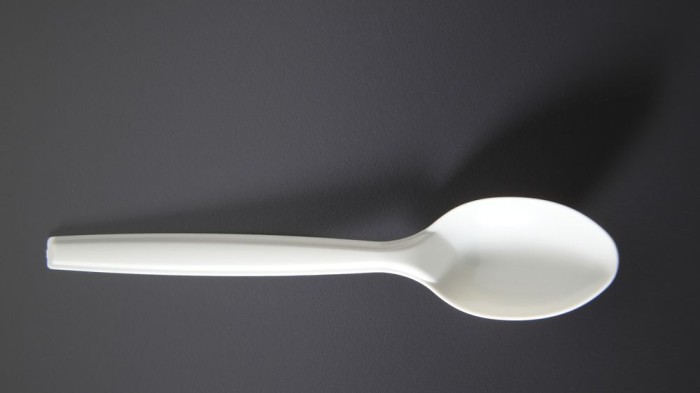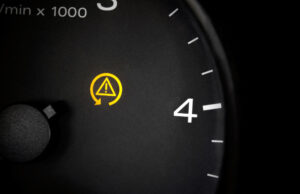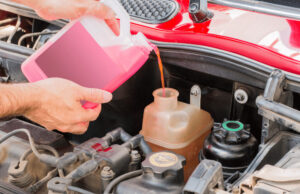
Polypropylene and polystyrene are the two most popular plastics used to make plastic utensils. Plastics are manufactured from monomers and processed through a polymerization process. Natural gas and oil are used to make monomers or single-chain molecules like ethylene and propylene.
Table of Contents
17 Things To Know About Plastic Spoons
1. Are plastic spoons recyclable?
In most municipal recycling projects, plastic knives, forks, and spoons are not accepted. So it is best to dump them in the trash unless you’re confident they’ll accept them in your local scheme.
Those utensils that we use while dining is often made of recyclable plastic silverware. As a consequence, the plastic fork and spoon are included in the list of easily recyclable products.
Since recycling plastic utensils is difficult, the safest choice is to reuse them. You will do this by constantly cleaning and using it until it is no longer usable.
2. Are plastic spoons teaspoons?
A teaspoon is approximately 5mL in size, while a tablespoon is approximately 15mL. A teaspoon is a volume measurement unit that equals 1/3 tablespoon. A small Plastic spoon is around one teaspoon in size and can be used to consume yogurt from a small jar or add sugar to tea.
3. Are plastic spoons safe to use?
Using plastic kitchen utensils like spoons, spatulas, and whisks when cooking may poison you and damage your liver or thyroid, according to a new study. So, it’s best to avoid using plastic altogether when preparing meals.
When cooking, avoid using plastic utensils and accessories because they can melt or flake under intense heat or wear down over time, allowing chemicals to move into the food. Opt for more stable materials instead, such as wood, silicone, or stainless steel.
4. Are plastic spoon dishwashers safe?
Yes, it is safe. Plastic spoons and other plastic utensils can be washed in the dishwasher or by hand.
5. Are plastic spoons teaspoons or tablespoons?
As we know, a teaspoon is approximately 5mL in size, while a tablespoon is approximately 15mL. A teaspoon is almost equal to 1/3 tablespoon. . A small Plastic spoon is around 1 teaspoon in size. Plastic spoons come in different sizes. So, they can be both teaspoons and tablespoons.
6. Are plastic spoons biodegradable?
No, it’s not true. Since bio-plastic needs a high temperature to really break down, the fork or spoon made of bio-plastic will behave like plastic and break down into smaller parts.
Plastic cutlery, such as spoons and forks, is estimated to take over 200 years to decompose. This is in ideal conditions since it will be exposed to a lot of sunlight and will photodegrade. Unfortunately, these things always end up in landfills, where they might last forever theoretically.
7. Are plastic spoons reusable?
Plastic spoons are made to be used only once, so reusing them isn’t a brilliant idea. However, you can still reuse them after washing them, but they’ll be too dirty to reuse after a few uses.
8. Can plastic spoons be recycled?
In most municipal recycling projects, plastic knives, forks, and spoons are not accepted. So it is best to dump them in the trash unless you’re confident they’ll accept them in your local scheme.
Those utensils that we use while dining is often made of recyclable plastic silverware. As a consequence, the plastic fork and spoon are included in the list of easily recyclable products.
Since recycling plastic utensils is difficult, the safest choice is to reuse them. You will do this by constantly cleaning and using it until it is no longer usable.
9. Can plastic spoons and forks be recycled?
Yes, Plastic spoons and forks are recyclable, and many recycling programs accept them alongside other plastic forms. While many do not, and this is due to cost.
However, in most municipal recycling projects, plastic knives, forks, and spoons are not accepted. So it is best to dump them in the trash unless you’re confident they’ll accept them in your local scheme.
10. Can plastic spoons go in the microwave?
In the microwave, only use microwave-safe plastic utensils. The plastic will melt if they are not microwave friendly. The heat of the food in the container will degrade or melt the plastic after long cooking periods.
Melting the plastic can increase toxic chemicals such as BPA and phthalates by melting the plastic.
11. Do plastic spoons float?
We know that Water has its density, anything that is denser than the Water can sink. For example, the metal spoon has a higher density than the Water, so it will sink in the Water, while the plastic spoon has a lower density than Water so that it will float on the water’s surface.
12. Do plastic spoons have bpa?
Yes, Plastic spoons do have BPA. On melting, they release harmful toxic byproducts.
13. How do plastic spoons change color?
Organic chemicals called leucodyes change color as energy causes their molecules to move back and forth. These molecules absorb light and therefore display colors depending on whether the temperature is hot or cold. So, as magical as these spoons seem to be, we’re afraid they’re not.
14. What size Are plastic spoons?
The length of a regular disposable teaspoon is 12.8 inches, which is suitable for most diners. Long-handled spoons are 14.2 inches long and are usually used for cooking or eating meals served in tall containers, such as milkshakes.
15. What material Are spoons made of?
Plastic cutlery is the most common form of disposable cutlery. Polypropylene or polystyrene is used to produce plastic cutlery.
Polystyrene is the most popular plastic for spoons and is most often associated with protective packaging.
16. When were plastic spoons invented?
Plastic spoons were first introduced in the 1940s, but mass production did not begin until the 1950s. They became widely used a decade later, along with the rise of the fast-food industry.
17. Who invented plastic spoons?
Companies including Lustro Ware and Melmac first introduced plastic spoons, forks, cups, and other kitchenware.
Conclusion
From the study of Plastic spoons, we concluded that they are made up of two types of plastics: polypropylene or polystyrene. It is preferred to use them only once, but they can also be reused if you wash them by hand or in the dishwasher. Also, Plastic spoons and other utensils can be recycled, but it is not very cost-effective. That is why the best option is to dump them.





